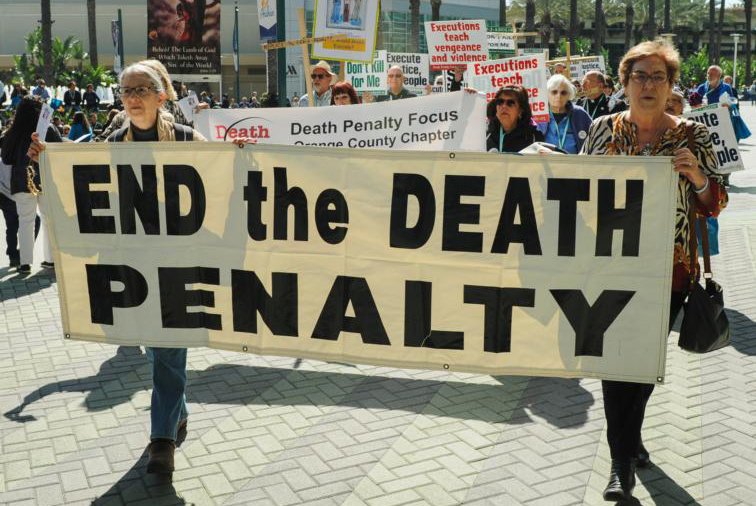California, the land of sunshine and Hollywood dreams, also carries a dark secret: a deeply flawed death penalty system. Despite being the most populous state in the US, California has not carried out an execution since 2006. This inactivity isn’t due to a lack of capital punishment on the books; it’s a consequence of a system riddled with delays, legal challenges, and ethical concerns.
The history of capital punishment in California is a long and contentious one. After a brief abolition period in the early 1970s, voters reinstated the death penalty in 1978. Since then, over 750 individuals have been sentenced to death, but only 13 have been executed [Wikipedia – Capital punishment in California]. This vast discrepancy highlights the dysfunction of the system, where sentences hang in limbo for decades, offering little closure to victims’ families and draining state resources.
The Inhumane Costs: Why California’s Death Penalty is Cruel and Unusual
The Eighth Amendment to the US Constitution prohibits “cruel and unusual punishment.” California’s death penalty system runs afoul of this principle in several ways:
- Lengthy appeals and indeterminate sentences: The average death penalty case in California takes decades to wind its way through the court system. Inmates can face years, even decades, on death row with the constant threat of execution looming over them. This prolonged period of uncertainty constitutes a form of cruel and unusual punishment, inflicting immense psychological suffering.
- Racial bias and socioeconomic disparities: Studies have shown a racial bias in the application of the death penalty in California. People of color are disproportionately sentenced to death compared to white defendants convicted of similar crimes [NAACP Legal Defense and Educational Fund – California Death Penalty]. Additionally, those from lower socioeconomic backgrounds often lack the resources for adequate legal representation, further tilting the scales of justice.
- The risk of wrongful convictions: The death penalty is irreversible. The specter of executing an innocent person is a chilling reality. According to the National Registry of Exonerations, at least 189 people have been wrongly convicted and sentenced to death nationwide since 1973. Even one wrongful execution is a horrifying injustice.
- Psychological toll on inmates and families: The death penalty inflicts psychological trauma not only on those facing execution but also on their families. Years of uncertainty and the constant threat of losing a loved one take a devastating emotional toll. This mental anguish extends to families of victims as well, who are often trapped in a cycle of waiting for closure that may never come.
A Broken System: The High Cost and Flawed Implementation
Beyond the ethical arguments, California’s death penalty system is a financial black hole. Studies estimate that each death penalty case costs the state millions of dollars more than life imprisonment without parole [Los Angeles Times – California’s costly death penalty]. These exorbitant costs divert resources away from other critical areas like education and public safety.
Furthermore, the death penalty has not been shown to be an effective deterrent against crime. Multiple studies have found no conclusive link between capital punishment and lower homicide rates. In the absence of deterrence, the question arises: What purpose does the death penalty serve?
The ethical implications of state-sanctioned killing are profound. Does the government have the right to take a life, even as punishment for a heinous crime? This question has been debated for centuries, and California’s flawed system offers no easy answers.
The Road Ahead: Alternatives and the Path to Abolition
As California grapples with the ethical and financial burdens of the death penalty, the time has come to explore alternatives. Here are some promising avenues:
- Rehabilitation and restorative justice programs: The focus should shift towards programs that offer opportunities for rehabilitation and restorative justice. Investing in programs that help reduce recidivism and promote healing for victims’ families is a far more productive approach than capital punishment. These programs could involve victim-offender mediation, educational and vocational opportunities for inmates, and mental health support.
- Life imprisonment without parole: Some argue that life imprisonment without parole offers a just and irreversible punishment without the ethical concerns associated with the death penalty. This approach ensures the offender remains incarcerated for life, protecting public safety.
- Shifting public opinion and the future of capital punishment: Public opinion on the death penalty is shifting in California and across the US. Polls consistently show a decline in support for capital punishment, with a growing number of people questioning its effectiveness and morality [Pew Research Center – Public Opinion on the Death Penalty].
Conclusion: A Call to Humanity – Ending the Death Penalty in California
California has a unique opportunity to become a leader in criminal justice reform by abolishing the death penalty. By focusing on rehabilitation, restorative justice, and alternative forms of punishment, the state can ensure public safety while upholding its commitment to human rights.
Ending the death penalty is not about condoning heinous crimes. It’s about recognizing the flawed nature of a system prone to errors and the inherent value of human life. California has the resources and the moral compass to chart a new course, one based on justice, compassion, and the pursuit of a safer future for all its citizens.
Additional Points to Consider:
- Discuss specific cases of wrongful convictions on death row in California to personalize the risk of error.
- Briefly mention the logistical challenges and controversies surrounding lethal injection protocols used in California’s death penalty.
- Acknowledge arguments in favor of the death penalty, such as retribution and closure for victims’ families. However, present counterarguments highlighting the lack of deterrence and the possibility of inflicting further suffering on families.
- Conclude with a call to action, urging readers to contact their state representatives and advocate for the abolition of the death penalty.



